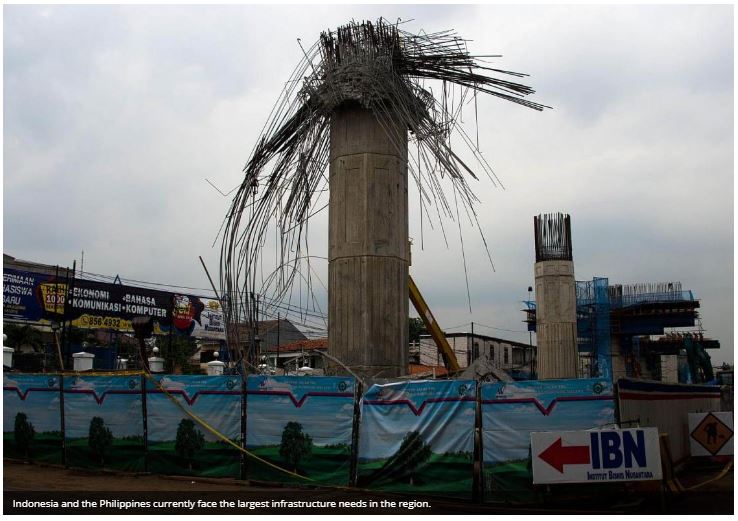Infrastructure gaps in region mean business for Singapore SMEs
IF YOU were to order a can of Coke on a remote holiday island in the Philippines at midday, chances are it won’t be cold.
With no central source of electricity, most food and retail establishments on such off-grid islands run on portable diesel generators, which are switched on for a mere four hours a day to cool their refrigerators.
Come nightfall, these people return home to their families, who are part of the 65 million people in Southeast Asia still living in darkness.
The Asian Development Bank estimates that South-east Asia requires S$3.78 trillion in infrastructure investments from 2016 to 2030. The lack of a continuous supply of electricity has been identified as a key infrastructure gap to tackle.
This presents an opportunity for Singapore’s small and medium-sized enterprises (SMEs) to embark on decentralised infrastructure projects in the region, said Enterprise Singapore’s director of urban solutions Geoffrey Yeo.
He noted that such “small-scale” projects, valued at between S$5 million and S$70 million, will be a “better match for SMEs in terms of their resources and risk appetite”.
“Undertaking such projects also enables our SMEs to build up their track record before they embark on larger ones,” he added.
Indonesia and the Philippines currently face the largest infrastructure needs in the region.
These countries have many fragmented and remote islands, making it financially and geographically unfeasible to connect them to a main power grid. Those places with electricity, such as hotels and resorts, typically run on expensive – and polluting – diesel generators.
To address the needs of the local community in Palawan, a remote Philippine province, Singapore-based renewable energy firm WEnergy Global recently launched a hybrid microgrid in the area.
A microgrid is a small grid that runs independently or alongside a main power grid. It is typically used to deliver power to off-grid populations, or to serve as back-up generator, and to store excess energy.
Known as the Sabang Project, the US$10 million venture by WEnergy aims to provide a cleaner and more cost-effective alternative to small diesel generators.
Said its chief executive and co-founder Atem R. Ramsundersingh: “Those who currently have access to electricity, such as the hotels, are running on dirty power. If the rest decide to use diesel too, we will soon be walking around with masks.”
He noted that WEnergy’s competitive prices makes the deal attractive.
The small establishments and homes that use their own diesel generators fork out about US$0.90 per kilowatt-hour (kWh) of energy; the hotels pay about US$0.40 per kWh.
WEnergy’s rate is US$0.20 per kWh.
“Saving the earth is important, but at the end of the day, people look into their wallets first,” said Mr Ramsundersingh, who is targeting a 15 per cent profit.
“These guys can enjoy lower prices from us; the clean energy is just a great bonus.”
Canopy Power, a local hybrid microgrid provider, launched its first project at a remote dive resort and conservation centre in Indonesia early last year.
The firm’s hybrid plant at the Misool Eco Resort has reduced annual diesel consumption by 55 per cent; it aims to hit 80 per cent by the second quarter of 2019.
Canopy chief executive Sujay Malve said: “Diesel is more expensive than renewable energy. If we can help these guys cut their diesel consumption, they would certainly be interested.
“When you’re 200 to 300 km away from the mainland, it’s also very costly to haul diesel to the island.”
Canopy’s second plant at another resort in Indonesia is slated to be ready in the next six months.
WEnergy has also secured a US$16 million contract to provide energy on two other islands in Palawan, with construction to begin next year.
However, a poor regulatory framework in these markets is a pertinent bottleneck for energy providers. It took five years for the Sabang Project to be approved, said Mr Ramsundersingh.
“As our technology is rather new, there weren’t clear regulations five years ago. We had to provide seminars and workshops to educate the major stakeholders, which really took a long time.”
Mr Malve echoed similar sentiments, saying: “It’s a big market but it’s still very closed right now. There are opportunities, but you have to be patient.”
To help bridge the gap between firms and the relevant stakeholders, Enterprise organises roundtables with industry practitioners to drive infrastructure project discussions. For example, nine local companies met government and business stakeholders from Indonesia last year to understand more about the opportunities in the renewable energy sector.
Firms can also tap Enterprise’s centres in Manila, Jakarta and Surabaya for more insights on the infrastructure landscape in the region.
Mr Ramsundersingh hopes such initiatives will shorten the approval process for future projects. He said: “The sun shines on your head. All you need to do is to put a solar panel on your head and attach a little cable to charge your phone.
“If you can do that on your head, you can do that on your house. We have the technology for renewable energy and it’s not expensive. Getting past regulations is the main issue.”
Source: https://www.sgsme.sg/news/infrastructure-gaps-region-mean-business-singapore-smes


 English
English




